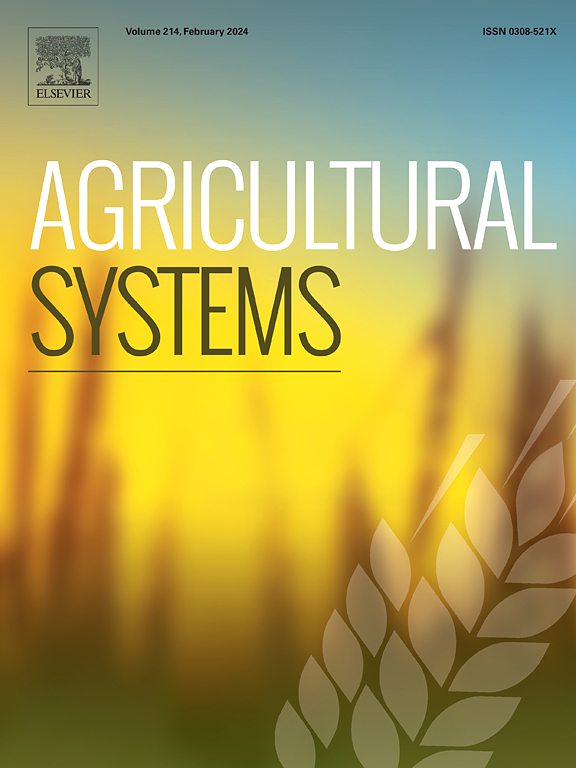基于半动态空间预测的韩国松树枯萎病风险监测
IF 6.1
1区 农林科学
Q1 AGRICULTURE, MULTIDISCIPLINARY
引用次数: 0
摘要
本文章由计算机程序翻译,如有差异,请以英文原文为准。

Risk monitoring of pine wilt disease based on semi-dynamic spatial prediction in South Korea
CONTEXT
Pine wilt disease (PWD), caused by Bursaphelenchus xylophilus, is the deadliest disease affecting pine trees, and causes severe economic and ecological damage in South Korea. Therefore, monitoring PWD is a national campaign necessary for timely control of the disease.
OBJECTIVES
We aimed to develop a model that predicts PWD on a monthly and to use this model to build information that can be utilized for practical monitoring.
METHODS
This study developed a semi-dynamic species distribution model to predict the monthly probability of PWD occurrence in South Korea, incorporating climate and anthropogenic factors along with monthly PWD occurrence data. The model was further refined by classifying risk levels across administrative districts, making it applicable for practical monitoring. Additionally, an ensemble model was created by integrating monthly PWD predictions with host distribution data. This approach identifies the most vulnerable areas at risk of PWD outbreaks, offering a targeted strategy for disease management and prevention.
RESULTS AND CONCLUSIONS
The results showed the highest likelihood of PWD occurrence around actual outbreak areas; however, monthly variations in disease occurrence areas were observed. Notably, owing to vector activity, the potential for spread to areas where outbreaks had not yet occurred was the highest during the summer season. Additionally, because factors contributing to PWD vary by season, monitoring should be conducted monthly, whereas the monitoring map identifies areas that require intensive management throughout the year.
SIGNIFICANCE
This study not only provides the foundational data necessary for establishing practical monitoring strategies for PWD but also offers an approach for the semi-dynamic prediction of species distribution modeling based on monthly data. These methods are expected to be useful in developing spatial prediction and monitoring strategies for forest pests and diseases over time, which are relatively limited in this field.
求助全文
通过发布文献求助,成功后即可免费获取论文全文。
去求助
来源期刊

Agricultural Systems
农林科学-农业综合
CiteScore
13.30
自引率
7.60%
发文量
174
审稿时长
30 days
期刊介绍:
Agricultural Systems is an international journal that deals with interactions - among the components of agricultural systems, among hierarchical levels of agricultural systems, between agricultural and other land use systems, and between agricultural systems and their natural, social and economic environments.
The scope includes the development and application of systems analysis methodologies in the following areas:
Systems approaches in the sustainable intensification of agriculture; pathways for sustainable intensification; crop-livestock integration; farm-level resource allocation; quantification of benefits and trade-offs at farm to landscape levels; integrative, participatory and dynamic modelling approaches for qualitative and quantitative assessments of agricultural systems and decision making;
The interactions between agricultural and non-agricultural landscapes; the multiple services of agricultural systems; food security and the environment;
Global change and adaptation science; transformational adaptations as driven by changes in climate, policy, values and attitudes influencing the design of farming systems;
Development and application of farming systems design tools and methods for impact, scenario and case study analysis; managing the complexities of dynamic agricultural systems; innovation systems and multi stakeholder arrangements that support or promote change and (or) inform policy decisions.
 求助内容:
求助内容: 应助结果提醒方式:
应助结果提醒方式:


